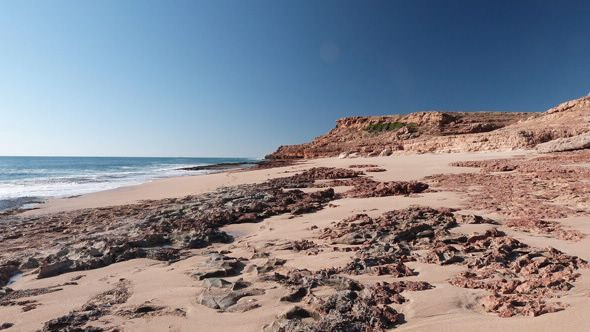Earliest Australia Artifacts Show Ancient Aboriginal Hunter-Gatherers Adapted Well To Environment

Newly discovered artifacts are evidence of humans living in Australia between about 46,000 and 51,000 years ago, researchers say, making them some of the earliest traces of aboriginal settlement there.
The artifacts included what was left of a shellfish meal and were found in a cave on Barrow Island off the coast of northwestern Australia, according to a study in the journal Quaternary Science Reviews. They paint a picture of a society that adapted to its surroundings and made use of the resources available.
Read: Ancient Chaco Canyon Society Was Obsessed With Six-Toed Feet
While it’s more isolated now, at the time the ancient aboriginal people migrated to Australia and up until several thousand years ago, Barrow Island was a coastal desert connected to the mainland by a land bridge that is now underwater.
“Archaeological deposits … reveal some of the oldest evidence for Aboriginal occupation of Australia, as well as illustrating the early use of marine resources by modern peoples outside of Africa,” according to the study. “First occupation occurs between [51,100 and 46,200 years ago], overlapping with the earliest dates for occupation of Australia.”
In the limestone Boodie Cave, researchers found charcoal, shell and other animal remains and stone artifacts, the researchers say, and the thousands of items the early humans left behind show they adapted to a changing, arid environment. The hunter-gatherers started to use marine creatures in their diet 42,500 years ago, the earliest known time this happened in Australia, and “despite fluctuating sea levels and dramatic extensions of the coastal plain,” the people kept using those marine resources.
“Although the coastal areas where the first inhabitants of our continent lived now lie under water, the team located a site on a continental island that has proved to be remarkably rich,” researcher Vladimir Levchenko said in a statement from the Australian Nuclear Science and Technology Organization.
As time went on, they relied on a wider variety of both land and marine species for food. That is until about 6,800 years ago, when sea levels were rising, the land bridge was disappearing and the location was becoming the island we know it as today — around that time, the early settlers abandoned the cave.
Read: Bones of Human Sacrifices Found in Palace
The research “has helped to clarify our understanding of the behaviour of modern peoples who dispersed from Africa and reached Australia,” Levchenko said.
The timeframe is consistent with previous estimates of when people first began migrating to and settling Australia, long before Europeans showed up.
A recent genetic analysis has definitively connected today’s aboriginal population to those first immigrants, after another team of researchers compared DNA from old hair samples. They found that the native tribes had been living in their homeland for about 50,000 years, all of them descended from those first migrants.
© Copyright IBTimes 2024. All rights reserved.





















